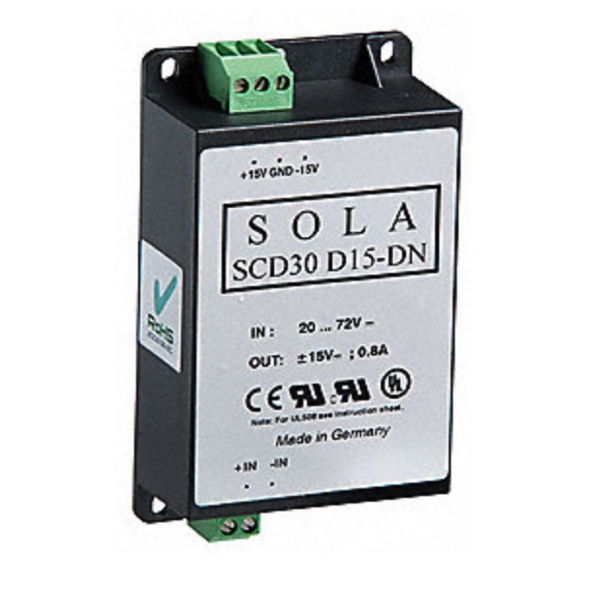Sola Voltage Converters

DC to DC converters are devices that convert direct current (DC) from one voltage level to another. Switched-mode DC to DC converters temporarily store the input energy and then release that energy to the output at a different voltage. The storage may be in electric field storage components (capacitors) or in magnetic field storage components (transformers or inductors). Switching conversion is often more power-efficient (around 75% to 98%) than linear voltage regulations, which dissipates unwanted power as heat. Switched-mode converters increase the battery endurance of portable equipment. DC to DC converters use switches, capacitors and inductors to reduce switching noise and maintain consistent and regulated DC voltage that is often from a source that is fluctuating and not constant.
Industrial automation, control, monitoring and testing utilize DC at different voltages. Industrial power supplies that convert AC power to the required DC power sometimes only provide a single voltage level. DC to DC converters can supply the required voltages levels for the various components. Some industrial power supplies may create small output voltage fluctuations that could be harmful to connected equipment. DC to DC converters help to maintain steady voltage levels even with input fluctuations.
Sola SCD Encapsulated DC to DC Converters are designed to power industrial control instrumentation devices and equipment where AC power is not convenient or accessible. With a wide input range, the units can operate through the most difficult factory-floor conditions and feature easy-to-install DIN rail and chassis mounting. The encapsulated design meets IP20 specifications for use in harsh environments.
Signal isolators are used to protect sensitive equipment, such as PLCs, from potential hazards that may originate from devices they are connected to, such as sensors or transmitters. Isolators can also be used to filter any noise that might arise from disturbances along the signal path back to the PLC.
Signal converters take one type of signal and change it to something else. For example, a signal converter can interpret an RTD signal and convert it into something that a PLC can understand.
Signal amplifiers increase the resolution of an input signal, allowing for more accurate and detailed data to be sent to the controller, enabling better monitoring and control of devices. Another important function that amplifiers perform is increasing the signal-to-noise ratio.
Signal splitters do not change the signal, but allow the signal to be sent to more than one location. For example, a signal splitter can be used to send data to two different PLC’s without any signal degradation.

